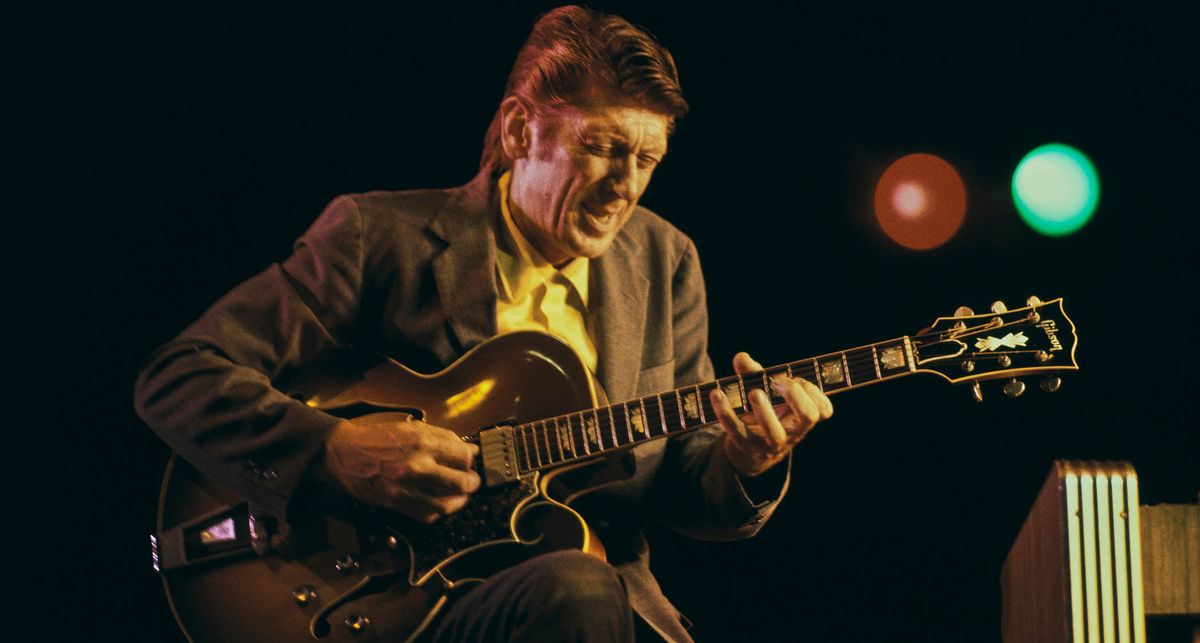Complete mastery of the fretboard – as much as such a thing may be possible – would have to include knowing each and every way a chord can be played or ‘voiced.’ Taking a theoretically identical chord and juggling its notes can give a subtle or not so subtle change in timbre. Being able to arrange voicings to ‘sit’ nicely in a chord progression (both to your ears and on the fretboard) is an under-appreciated skill that can set you apart from players who feel ‘three chords and the truth’ is enough.
Sometimes that is sufficient, of course, but we have space for five chords here and we want to improve, rather than rest on our laurels! You’ll notice each major 7 chord has its own ‘EQ’ due to the different strings used. I’ve highlighted A for particular attention here because it’s such a nice key on the guitar, but you’ll notice below that a Cmaj7 has crept in on Example 5, too. Why? Well, it’s a nice alternative to the more obvious shapes, plus it fits really well with A.
Example 1 This version of Amaj7 has the maj7 (G#) as the highest note, though the relatively wide interval between this and the C# (3rd) on the second string – a perfect 5th – gives it a different feel to other, more common shapes. I’ve used the open fifth string (A) as root here, but omit this and the voicing becomes movable. Example 2 This version of Amaj7 features the root-3rd-5th-maj7 (A-C#-E-G#) in scale order, with the open fifth string as its root, but you can get some .

















